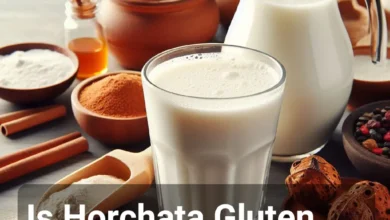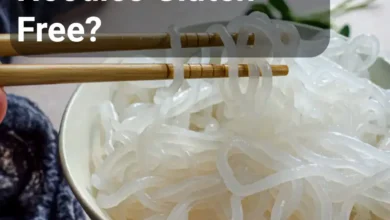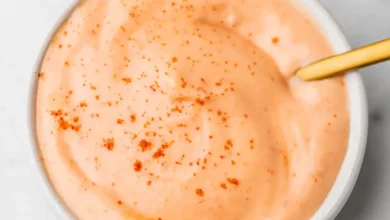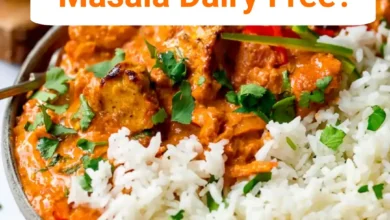Is Yellow Curry Gluten Free?

The more you travel, the more you experience or begin to try out more dishes. While all Thai curries are available to us in the U.S., not everyone gets to try them. My visit to Lebanon, the Philippines, and Thailand a few years ago opened me up to numerous dishes like the bihon pancit, the Thai curry, and the Lebanese vermicelli rice.
In recent time, I have been so immersed in Thai curry, playing around with the recipes for the red (adding tomatoes and less chilli—the taste is awesome), the green, and the yellow curry, and I have made a lot of beauties that excites the taste buds, but is yellow Thai curry gluten free? Here is everything you need to know.
What is Yellow Curry?
Yellow curry is one of the three main Thai curries you’ll find in a Thai restaurant in the U.S. It has a bit of spice, is the creamiest of all the curries, is less oily, and has a sweet, milder taste when compared to other Thai curries.
Yello curry gets its characteristic golden yellow hue from turmeric, and it can be made with fish, tofu, shrimp, plenty of curry paste, duck, or vegetables, but it is mostly served with beef or chicken and potatoes or other starchy vegetables.
What is Yellow Curry Made Of?
| Ingredient | Contribution to Yellow Curry |
|---|---|
| Yellow Curry Paste | Provides the distinctive flavor and spice profile of the curry. |
| Coconut Milk | Forms the creamy base, adding richness and a hint of sweetness. |
| Turmeric | Lends a vibrant yellow color and contributes an earthy flavor. |
| Lemongrass | Adds citrusy, lemon-like notes, enhancing freshness. |
| Ginger | Infuses warmth and a zesty kick to the curry. |
| Garlic | Provides savory depth and aroma to the dish. |
| Shallots | Imparts a mild onion flavor, enhancing the overall taste. |
| Thai Bird Chilies | Adds heat to the curry; adjust quantity for spice preference. |
| Coriander Powder | Offers a citrusy, slightly sweet flavor to the spice blend. |
| Cumin | Adds earthiness and depth to the spice profile. |
| Fish Sauce | Contributes umami and saltiness to balance flavors. |
| Brown Sugar or Palm Sugar | Provides sweetness, balancing the spiciness and acidity. |
| Kaffir Lime Leaves | Infuse a unique citrusy aroma; often torn before adding. |
| Thai Basil Leaves | Adds a fresh, sweet, and slightly peppery flavor. |
| Vegetables (e.g., bell peppers, carrots) | Enhances nutritional content and adds texture. |
| Protein (e.g., chicken, beef, tofu) | Adds substance and a source of protein to the dish. |
Is Yellow Curry Healthy?
Yellow curry is not the healthiest sauce you will have over your chicken or beef dish. It has lots of fat, all thanks to the coconut milk. A cup of yellow curry has about 17 grams of saturated fat and could have calories as high as 700 kcal per serving. Yellow curry can supply over 1000mg of sodium per serving, depending on the recipe used, making it less healthy.
However, yellow curry contains lots of potassium, which is essential for regulating blood pressure. It also has lots of vegetables, which supply dietary fiber and can boast over 18 grams of protein per serving.
Yellow curry can be made healthier by swapping chicken breasts for chicken thighs, seafood, or fish. High-fat coconut milk could be replaced with light coconut milk, which has a lesser fat content. You could also substitute the olive oil for cooking spray, which has 0 calories.
Is Yellow Curry Gluten Free?
Traditional yellow curry contains mainly vegetables, coconut milk, yellow curry paste, and protein sources, making it gluten-free. The preparation method and ingredients make the sauce thick, eliminating the need to use wheat or modified starch for thickening.
However, there are various recipes used in different restaurants to achieve a more unique taste, and these recipes may include gluten-containing sources, which is why it is best to always inquire about what was used in your meal and make your dietary restrictions known to the server so necessary modifications can be made.
My most recent experience at CAVA, when I went to have a meal, was awesome! As soon as you make your dietary needs known, they change their gloves, clean up the countertops, use different equipment, and eliminate as many cross-contamination sources as possible. This is why it is best to always visit restaurants that are aware of gluten-free dietary restrictions.
Is Yellow Curry Paste gluten free?
Yellow curry paste is naturally gluten-free, as it is a combination of herbs and spices. However, you should always endeavor to read through the labels to see wheat-based additives such as modified food starch and brewer’s yeast extract.
Usually, Asian foods such as noodles and most other products are gluten-free, so even if they are not tagged gluten-free, you can still be confident of getting a product free from gluten each time you shop from the Asian section or markets; however, always check the labels.
Summary
Thai yellow curry is one of the creamiest mid-week dinners you’ll ever have, and with a few modifications, you could achieve a whole lot of experience with this dish. However, being gluten-sensitive means being careful about what we eat to avoid experiencing those gluten-sensitivity symptoms.
Yellow curry is one of those traditional dishes that has no gluten; however, you have to take the necessary precautions to avoid cross-contamination when you dine out.



